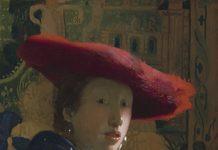Long before the practice of donning fancy dress costumes and consuming copious amounts of sugary confectionery, Halloween, or as the pagans originally referred to it, Samhain (“Sau-ihn”), was a remembrance celebration in honor of the dead through feasting and drinking, a practice which continues in many cultures to this day.
In many ways, the modern view of Halloween as a time for fun and games offers light relief from some of the darker themes associated with the season, and once revelers grow out of trick or treating they can still join in the fun: over the years marketers have devised an increasingly eclectic range of events, from Halloween casino party ideas to haunted house tours.
Yet behind the smiling, pumpkin-like face of commercialized Halloween is a legacy of creepily creative works, from ancient folklore translated into the written word all the way through to the horror movies of modern cinema, all offering a window into the darker recesses of the human imagination and confronting audiences with visions of the mysterious and the macabre.
Table of Contents
Van Gogh’s Funny Bones
It might be hard to imagine Vincent Van Gogh, a man whose life was beset with mental anguish and personal tragedy, as a humourist. However, it’s not uncommon for artists of all stripes to alchemize their pain into something funny. Van Gogh was no stranger himself to “gallows humor”, as depicted in the painting “Head of a Skeleton with a Burning Cigarette” (1886, created during the artist’s studies at the Antwerp Art Academy.
The Witches of Waterhouse
Contemporary discourse frequently regards witchcraft as a kind of ancient, wild feminine power surging against centuries of oppressive patriarchy. Around the time of women’s suffrage, few artists depicted this better than John William Waterhouse, whose pre-raphaelite-inspired images of sorceresses, mermaids, and other mythical women as mysterious, sometimes foreboding beings continue to bewitch viewers.
Dorothea Tanning’s “Unknowable States”
The paintings of Dorothea Tanning could be seen as a metaphorical lifting of the spiritual veil to see what might be on the other side; the artist herself referring to her own work as depictions of “known but unknowable states”. In addition to her sculptures, poetry and many other works, Tanning’s paintings feature contorted human figures, outlandish botany and mythological creatures, creating an uncanny effect.
Kahlo’s Dance with Death
At the festival Día de los Muertos (Day of the Dead) the dead are not shooed away, but welcome to join the party. Mexican artist Frida Kahlo was especially attuned to this sense of familiarity with death, given her lifelong health struggles. She frequently made self-portraits, one of which is entitled “Thinking About Death”, which depicts a pensive-looking Kahlo, surrounded by thorns, with the image of a skull and bones placed in the center of her forehead.
Redon’s Fantastical Creatures
Odilon Redon’s early work, in particular his charcoals, were replete with strange, mystical symbolism. No stranger to dreamlike worlds himself, eyes were a common motif in Redon’s black-and-white works. Sometimes figures in his work had closed eyes, suggesting a meditative state; elsewhere they can be seen peering from a hot air balloon (Eye-Balloon, 1878), or on the enigmatic face of a grinning spider. In most cases, paintings are intended to be gazed at, but as Redon demonstrated, sometimes they stare right back.








